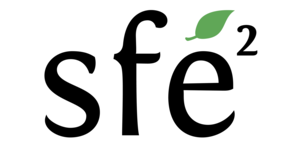Dear all,
We are very pleased to announce our fifth online CESABINAR!
The aim of these CESABINARS is to present the main results of the working groups once they finish a CESAB cycle. They last about 1 hour: 40 minutes of presentation and 20 minutes of questions, perhaps a bit more. The CESABINARs are open to the whole scientific community, to the participants of the CESAB groups and to the FRB network. They are a good opportunity to see how the CESAB groups work and what are their main results, but also to get in touch with the CESAB community and to get informed about our news. They are in English, so don’t hesitate to promote them in your networks.
_________________________________________
Rendez-vous:
– On Thursday 12th December, from 3:00pm to 4:15pm (Paris time)
– With: Sonia Chaabane & Thibault de Garidel-Thoron from the FORCIS project
– Subject: FORCIS – Foraminifera response to Climatic Stress: evaluating biodiversity changes of calcifying zooplankton in response to multiple stressors
– Language: English
– How : Join the zoom meeting through this page https://www.fondationbiodiversite.fr/en/evenement/frb-cesab-cesabinars/
TITLE: Foraminifera response to Climatic Stress: evaluating biodiversity changes of calcifying zooplankton in response to multiple stressors
ABSTRACT: Rising CO2 emissions are driving ocean warming and acidification, disrupting marine ecosystems and threatening calcifying organisms like planktonic foraminifera. These organisms, with their well-preserved fossils in sediments, serve as excellent paleo-environmental indicators. However, their ability to adapt to the rapid pace of modern environmental changes remains uncertain, and a global-scale assessment of their historical distribution is lacking.
The FORCIS project addressed these uncertainties by compiling a comprehensive database of planktonic foraminifera diversity and distribution from 1910 to the present. With over 180,000 samples collected from various depths and sampling devices, this dataset enabled analyses of species abundance across size classes, and depth. A new size normalization scheme facilitated comparisons across data sampled with different mesh sizes.
Our analysis revealed clear evidence of poleward migrations, with species diversity increasing at mid- to high-latitudes and some species moving deeper into the water column to escape warming surface waters. Additionally, foraminifera abundance declined by 24% over the past eight decades at these latitudes. Projections for ocean conditions in 2050 and 2100 suggest that low-latitude species will face conditions beyond their historical and present ecological range.
Ecological niche modeling, using ESM and GRNN models, indicates that these species distribution will likely continue shifting poleward, reducing foraminiferal diversity in tropical and subtropical regions. Shifting alone may be insufficient for those species to cope with anthropic changes.
_________________________________________
You can find everything you need about the CESABINARS on the dedicated page of the FRB website. This includes recordings of past sessions, descriptions, and Zoom connection links for upcoming ones. The page is regularly updated, so be sure to bookmark it!

Commentaires récents